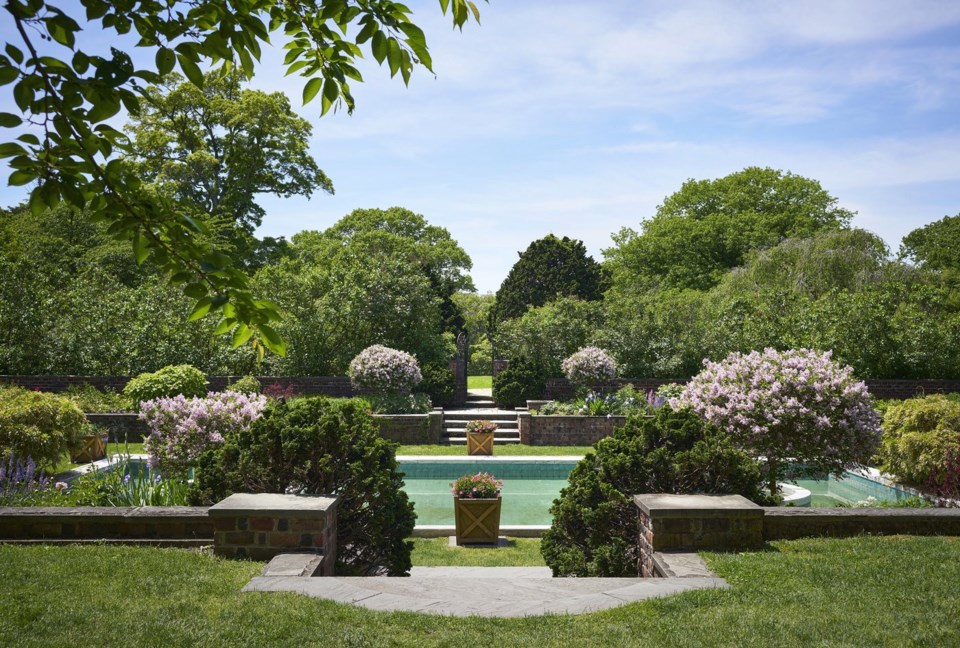OYSTER BAY, N.Y. (AP) — Some places seem to communicate with you when you visit. Not audibly, of course, but they somehow impart the echo of a life lived long ago. That’s the feeling I get at Planting Fields Arboretum State Historic Park.
The 409-acre remnant of Long Island’s grand Gold Coast is one of the region’s last surviving estates with its original acreage intact, which is remarkable when you consider how many of its cohorts have been divided up into housing developments or golf courses.
But it isn’t frozen in time. Recently, the site has been undergoing a multi-million dollar revitalization with a focus on biodiversity and native plantings rather than adherence to the plant palette selected for the property more than a century ago.
It’s a shift in emphasis that’s gaining traction in many historic gardens.
The new focus on sustainability was also evident when the arboretum recently replaced its storied half-mile-long double allée of European beech trees with native oaks. And meadows throughout the property, which have historically been mowed regularly, are now cut back just once or twice a year to allow a natural habitat to thrive.
A new book looks at a layered history
A new book, “Planting Fields: A Place on Long Island,” offers fresh perspective into the now-public arboretum. Full of color photography, both vintage and current (by David Almeida); sketches and plans by the famed Olmsted Brothers, who designed the landscape; and essays by architect Witold Rybczynski, landscape historian John Dixon Hunt and others, it’s an homage to the home and property.
At Planting Fields, the rolling lawns, gardens and woodland paths still command attention, anchored by Coe Hall, a sprawling Tudor Revival mansion.
The estate started taking shape in 1913, when English immigrant William Robertson Coe, chairman of the marine insurance company Johnson and Higgins, and his wife, Mai Rogers Coe, an heiress to the Standard Oil fortune, bought the land, which had once been a working farm. The couple used it as a country retreat.
Coe Hall was something of a 20th-century fantasy, deliberately built to look centuries old.
“The Coes were new money, but they didn’t want it to look like new money,” said Gina J. Wouters, president and CEO of Planting Fields Foundation and co-editor of the book, with Jerome E. Singerman. “They wanted it to look like they had generations of wealth.”
So, they brought in the best craftspeople of their time. There’s ironwork by Samuel Yellin, murals by Everett Shinn and Robert Winthrop Chanler and interiors by Elsie de Wolfe, who imparted a whimsical flair to the home.
The landscape, originally drafted by Boston landscape architect Andrew Sargent and his partner Guy Lowell, became a full-fledged Olmsted Brothers vision after Sargent died in 1918. There’s a formal Italian Garden, circular pool garden and greenhouses, including one that holds the largest camellia collection in the Northeast.
“Without a doubt, our claim to fame is that Planting Fields is the largest, still-existing Olmsted Brothers residential commission,” Wouters said. “Other properties have been sold off, turned into wedding venues, etc., but Planting Fields is the original 409 acres. Even on a national scale, that’s extraordinary.”
A continued emphasis on craftsmanship
The Coes themselves were hands-on, taking interest in breeding animals, collecting and hybridizing plants, patronizing contemporary artists and interior decorating.
In keeping with the couple's penchant for hiring first-rate contemporary experts, Planting Fields has recently invited renowned Dutch garden and landscape designer Piet Oudolf to create a 1-acre garden for the property. The plan, Wouters said, is to use Oudolf’s four-season approach and include perennial gardens and year-round beauty in keeping with the historic design of the property.
Wouters hopes the book imparts "an understanding of the incredibly layered history of Planting Fields and the stewardship model that is guiding us today and ushering us into the future.”
She hopes readers will also feel compelled to visit.
“W.R. Coe gifted the property to the people of the state of New York – not the state of New York – the people," she said. "That’s important.”
___
Jessica Damiano writes weekly gardening columns for the AP and publishes the award-winning Weekly Dirt Newsletter. You can sign up here for weekly gardening tips and advice.
___
For more AP gardening stories, go to https://apnews.com/hub/gardening.
Jessica Damiano, The Associated Press



